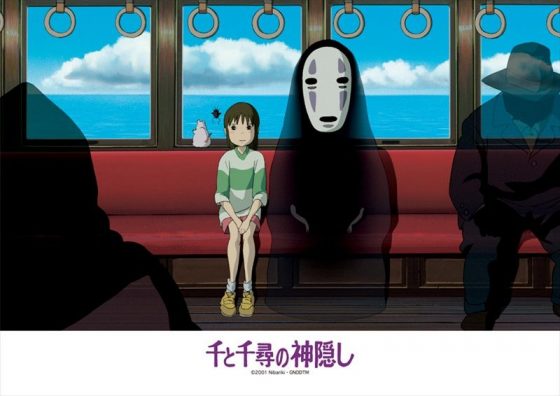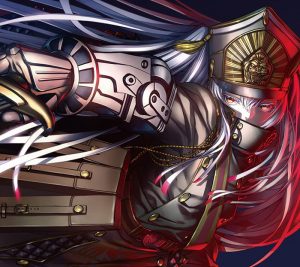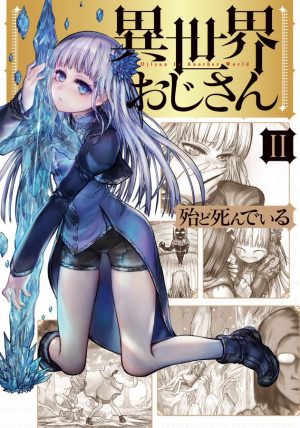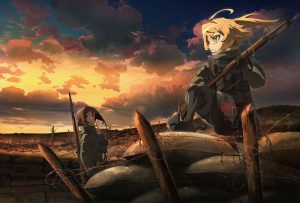
Anime has various genres that cater to various tastes, but this time around, our focus is on a genre so popular, it breaks the confines of a single medium and is present in all forms of human storytelling: the isekai genre. Put simply, isekai is a trope in fiction which involves the protagonist of said work finding themselves in another world. The most famous of these is possibly Alice in Wonderland, but if you really think about it, the isekai genre is varied in various departments and has spawned an innumerable number of beloved stories, anime or otherwise.
Isekai has completely permeated the anime medium and right now, we’re at the point where we’re given a new isekai title almost every single year. Many of these titles are adaptations of manga or light novels, the latter of which is an industry literally saturated with isekai titles. An example of just how saturated the genre is can be lifted straight from the pages of 2017. The publisher Kodansha decided to ban isekai and teenage protagonists for their contest that year due to the incredibly high prevalence of stories all featuring the same thing. However, that being said, another perspective is that the sheer number of isekai in circulation has presented a higher chance for the genre itself to evolve and change over time – which brings us to the point of this entire exercise: exploring some of the significant branches of isekai that we get in anime year in, year out.
The Alice in Wonderland type
This is the widely used template for isekai in anime and other media, and it normally just touches the basic idea of what otherworldly stories are like: the protagonist is whisked out of the life they knew and tossed into the deep end in a world completely foreign to their own. Generally, this idea of foreignness is especially evident in how these stories tend to have a surrealist spin to them which simply adds to the fantasy-related elements of the story in question. While the title we’re going to use to illustrate this idea is not generally seen as an isekai, it does tick all the boxes we set out above!
Sen to Chihiro no Kamikakushi (Spirited Away)
- Episodes: 1 (movie)
- Aired: July 2001
The basic premise of Spirited Away is that 10-year-old Ogino Chihiro is moving to a new town with her parents when they discover an abandoned park on their way to their new home. Chihiro soon comes to realise that there is more to the place than meets the eye when dusk falls and strange things start happening. Mysterious apparitions, as well as food that turned her parents into pigs was just the beginning of her descent into a world she had never known – the spirit world. Trapped in the spirit world, Chihiro must adapt to her surroundings, living and working amongst spirits, with the occasional help of the mysterious Haku. Throughout this experience, Chihiro works hard to save her parents and finally head home.
Spirited Away is one of the most critically acclaimed anime films and is highly rated across the globe, for various reasons. It isn’t an obvious isekai title due to the fact that there is simply just so much more to Spirited Away than the simple fact that Chihiro is in another world. The movie gives us great characters, not to mention a compelling overarching quest for Chihiro to return home whilst managing the looming threat of the No-Face at the bathhouse where she worked.
The fact that Chihiro loses her very name in this experience is word to the alienation that she felt being in this foreign world with strange and mystical creatures, not to mention being separated from her parents. The surrealness of the entire experience is very much in the same league as that of Alice in Wonderland or Cornelia Funke’s Inkheart, including the desire to return home. Other anime titles which match this format of isekai include .hack//Sign (2002) (which in and of itself reflects another brand of isekai), Vision of Escaflowne (1995), Drifters (2015) as well as Re:Creators (2017), That Time I Was Reincarnated as a Slime (2019) and Rise of the Shield Hero (2019).
Trapped in a Video Game
How often have you wanted to delve into the very world of your favourite game like some of your favourite fictional characters? Well, this particular trope is very easily left unconsidered as an isekai by many people because of just how far this particular trope has propagated itself in popular culture – anime included. The title we’re going to give special attention to in order to illustrate this trope, is the 2015 series, Overlord.
Overlord
- Episodes: 13
- Aired: July 2015 – September 2015
In the final hour of the virtual reality game Yggdrassil, Momonga, a powerful guild wizard and master of the guild Ainz Ooal Gown decides he’ll see the game out in its last moments. He is shocked; however, to notice that even though the clock has struck midnight, everything remains active, and Momonga is still conscious in his character, not to mention the fact that non-player characters seem to have developed their own personalities! In this strange situation, Momonga gets his loyal servants to help him figure things out in hopes that he will be able to find out just what caused this and if there are others in his same situation.
Overlord is one in a long line of anime that have had this trope and in all honesty, the trope is far from dying down. It now has a life of its own, with unique variations like Log Horizon, which is unique for the fact that all the characters seek to find the best way of life in this new environment, rather than frantically search for a way home. Older titles in this line of isekai include the rather infamous Sword Art Online and the .hack// franchise.
The Otherworldly Comes Here
With this type of isekai anime, we have the otherworldly elements coming into “the real world”. This is pretty much a subversion of the isekai trope. Unlike the previous two types we’ve mentioned, these stories tend to have the majority of the content happening within the confines of our real world. There are numerous examples of this particular isekai type, and shows like this tend to be refreshing no matter how many times you have engaged with this particular iteration of the isekai trope. We’ve mentioned the show before, so we won’t zoom in on it, rather, we’ll throw in GATE instead, because it subverts the isekai trope while adhering to it at the same time!
GATE: Jieitai Kanochi nite, Kaku Tatakaeri (GATE: Thus the JSDF Fought There!)
When an interdimensional gate opens up in the middle of Ginza and ushers in an army of supernatural creatures and warriors from another realm, pandemonium ensues. Off-duty JSDF officer Itami Youji happens to be in the area to attend a doujin convention when he is caught in the chaos, but he remains calm and helps to save as many lives as he can as the rest of the Japanese Self-Defense Force thwarts the invasion. Months later, Itami is tasked with leading an expedition through the gate into the region beyond – now referred to as the “Special Region”. With his special recon team, Itami must travel into this unknown world in order to befriend locals in order to establish peaceful ties within the ruling empire. Failure would result in a war far more chaotic than the devastation that befell Ginza a few months prior.
The fact that the portal between the worlds remains open throughout the events of the series is already an element that is unusual for isekai for it does not force any of the characters to deal with the feeling of alienation or being trapped. However, GATE’s uniqueness is a strength also because of the fact that it allows for us to come to see what would happen if the otherworldly met real life in a way that reflects human politics and sensibilities, but at the same time, we’re shown what life is like in the other world, which comes with various elements not unlike the average fantasy story. Other anime that bring the otherworldly into the “real” include the aforementioned Re:Creators, as well as The Devil is a Part Timer! (2013).
Final Thoughts

- Episodes: 12
- Aired: July 2015 – September 2015
As you can see, the isekai trope has taken a life of its own, especially within the anime medium. As a result, we have a wide variety of shows that draw upon this central premise but also do their part in creating a host of different cultures that in turn, grow anime as a medium. With that in mind, we need to give special mentions to incredible isekai shows like Fushigi Yuugi (2002), No Game, No Life (2012), KonoSuba (2016), Re:Zero kara Hajimeru Isekai Seikatsu (Re:Zero) (2016) and Saga of Tanya the Evil (2017).
These are shows which fall into the three categories we mentioned but also do their fair bit to break the boundaries of their trope. Saga of Tanya the Evil lines up with Tensei Shitara Slime Datta ken (That Time I Was Reincarnated as a Slime) and Kono Subarashii Sekai ni Shikufuku wo! (KonoSuba), for example, as a “Reincarnation Isekai” – one in which the death of the protagonist is what prompts their revival in a different world with their memories intact.
The growth in this trope is exponential and it is exciting to think about what new stories will do with this existing framework – as it is with other tropes and genres.
Recommended Post
Top 10 Best Isekai Anime of 2018 [Best Recommendations]
Recommended Post
Best Isekai Anime [Updated Recommendations]
Recommended Post
Top 10 Isekai Anime Characters
Recommended Post
Top 10 Best Isekai Anime for 2017 [Best Recommendations]
Recommended Post
4 Isekai Manga You Need to Know About
Recommended Post







